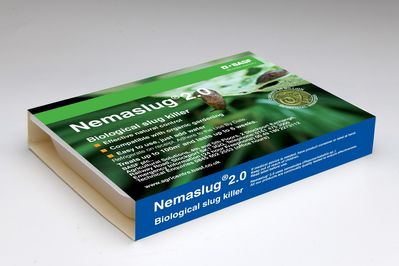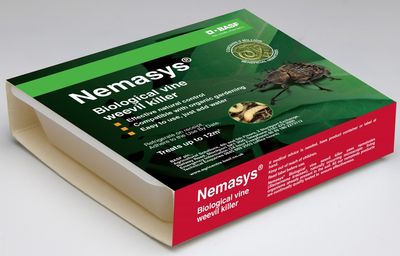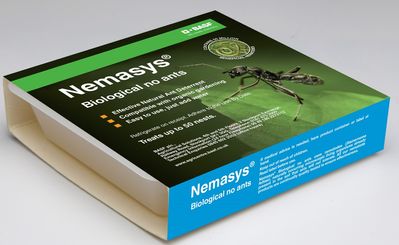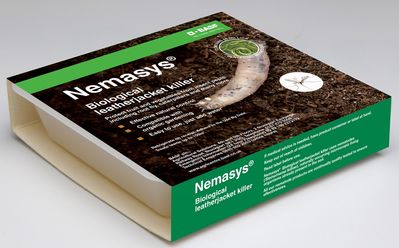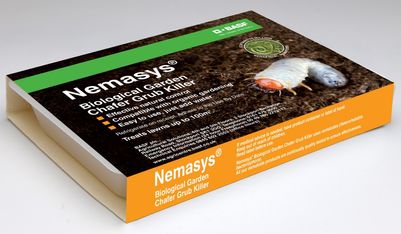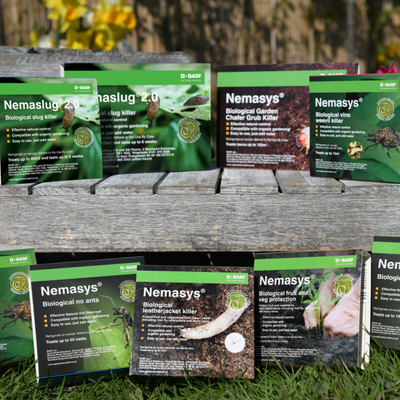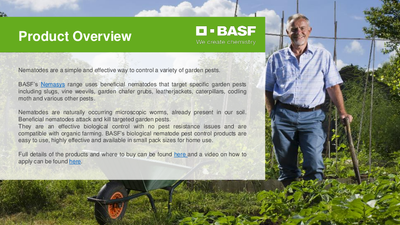Nemasys Product Overview
Published:
Read Time: 5 mins
Nematodes are a simple and effective way to control a variety of garden pests.
BASF’s Nemasys range uses beneficial nematodes that target specific garden pests including slugs, vine weevils, garden chafer grubs, leatherjackets, caterpillars, codling moth and various other pests.
Nematodes are naturally occurring microscopic worms, already present in our soil. Beneficial nematodes attack and kill targeted garden pests.
They are an effective biological control with no pest resistance issues and are compatible with organic farming. BASF’s biological nematode pest control products are easy to use, highly effective and available in small pack sizes for home use.
Nemaslug
Slugs decimate tender plants, eating twice their bodyweight each day and leaving a tell-tale slime trail. They are generally active when plants start growing and soil temperature is over 5oC. Young slugs tend to stay underground, feeding on decaying organic matter, developing unseen and waiting for young seedlings to be planted. Nemaslug can reach these underground slugs, stopping them in their tracks.
Slugs breed all year round, with two overlapping generations.
Peak egg laying season is March - April and September - October, but during a rainy summer, they can be consistently active.
Nemaslug contains millions of microscopic beneficial nematodes that occur naturally in your soil. They are invisible to the naked eye and come as a powder, which is mixed with water and applied to the soil where they search out and invade the slugs. As the nematodes invade the slug, it will stop feeding and will burrow underground to die. As it decomposes in the soil, the nematodes are released back into the soil to search out more slugs and the whole process starts again.
Each application of Nemaslug will control small slugs for six weeks, so for a slug free garden, reapply every 6 weeks from March - October.
Nemasys Biological Vine Weevil Killer
The larvae of the vine weevil feed on plants’ roots, cutting off their life support systems.
All adult beetles are female and they can lay thousands of eggs in their lifetime. Eggs hatch into legless larvae, feeding and growing throughout late summer/autumn.
Fuchsia, primula, begonia, geranium and most evergreen, which have fleshy roots, are particularly flavoured, as are strawberry and raspberry plants. Affected plants will wilt even though the soil/compost is moist and as more of the roots are destroyed the plant will eventually topple over. Adults will also eat leaves at night in summer and autumn, leaving distinctive crescent shaped notches, but the key is to control the more destructive larvae before they get to this point.
Control vine weevils naturally by applying Biological vine weevil killer, which kills the vine weevil grubs before they attack the plants.
Treat this pest between March and October.
Nemasys Biological No Ants
Black, red and yellow ants are found in gardens. Towards the end of July, swarms of flying ants look for a mate and a place to lay eggs. The Yellow Meadow Ant builds its nest in lawns making unsightly mounds. Red ants are aggressive and can sting if disturbed.
Black Ants are commonly seen indoors attracted by sweet food; they also milk greenfly and blackfly for sweet honeydew, which they protect from predators and if necessary move them around. Black Ants can nest anywhere including under pavements and alongside lawns with nests of usually 4,000 to 7,000 ants.
For persistent ant infestation and to keep ants at bay, simply re-apply Biological no ants nematodes at 4 weekly intervals, flooding the nests.
Treat this pest between April and September
Lawn Pest Control: Biological Garden Chafer Grub Killer and Natural Leatherjacket Killer
There are two pests that will be the culprits of most domestic turf damage.
Leatherjackets are about 25mm (1”) long, brown, legless and with no distinct head. They are the larval stage of crane flies (daddy long legs) which normally appear towards the end of August (but can also occur in Spring) and lay eggs within days. These hatch within two weeks and start to feed on grass roots. During mild winters, they continue feeding and cause significant damage from late winter to early spring. A good rule of thumb is to wait two weeks from when you first see the peak of crane flies, and apply nematodes, and then apply again in two weeks time, keeping the soil moist throughout.
Garden chafer grubs are creamy coloured, about 15mm (0.6") in length and 'C' shaped with distinctive legs (unlike vine weevils). Adult beetles emerge from lawns in May/June, mate and lay eggs, which hatch into small grubs that feed on grass roots and move close to the soil surface towards the end of August. By the end of October, then they burrow deeper and lie dormant to overwinter before pupating in spring.
Both leatherjackets and chafer grubs attack grass roots resulting in slow growth and yellow patches. Grass is easily pulled up, with little or no roots. Wildlife such as foxes and badgers, can create damage by digging to search for grubs, as do rooks, magpies, crows and woodpeckers – a good sign of an infestation. Dig up a piece of turf and inspect it for pests.
Treat these pests between August & October.
Nemasys Fruit and Veg Protection
Carrot and cabbage root flies, onion fly, sciarid and shore flies, caterpillars, cutworms, gooseberry sawfly, thrips and codling moth.
These pests challenge any gardener, particularly those growing fruit and vegetables. They eat roots and leaves and can weaken and kill plants. Carrot root fly lays eggs near plants (including parsnips, celery, celeriac and parsley) and maggots hatch out to tunnel into vegetables often leaving them inedible and impossible to store.
Cabbage root fly attacks all brassicas; cabbages, cauliflowers, broccoli, calabrese, Brussel sprouts, kale and root vegetables such as turnip, swede and radishes. It also attacks ornamentals such as stocks, alyssum and wallflowers.
Nemasys Biological fruit and veg protection is a unique mix of different nematode species to target a broad range of pests. It is best applied as part of a programme to control subsequent hatchings.
Full details of the products and where to buy can be found here and a video on how to apply can be found here.
Ends
Editors notes
Nematodes are naturally occurring microscopic worms, already present in our soil. Beneficial nematodes attack and kill targeted garden pests. They are compatible with organic farming, easy to use and can even be kept in your fridge!
Research scientists have isolated the nematodes that kill specific garden pests including Slugs, Vine weevils, Leatherjackets, Caterpillars, Codling moth and much more.
BASF’s state of the art production facility in the UK produces billions of nematodes in a form that is easily applied by gardeners. Over 20,000 different species of nematodes have been classified, although some estimates put the total figure closer to one million! BASF has the largest specialist nematode production facility in the world, growing trillions of beneficial nematodes for use in their Nemasys range of pest control products.
BASF experts are available for interviews, features and expert comment on biological pest control management, and product is available for reviews, competitions and product trials.

